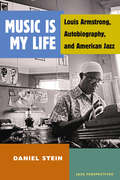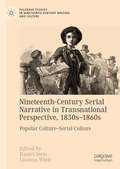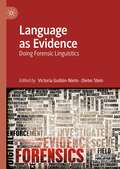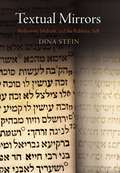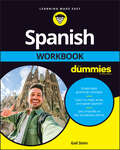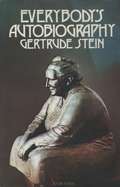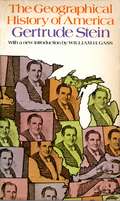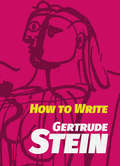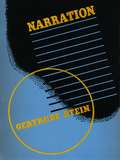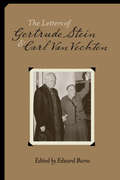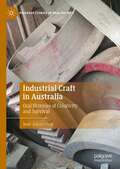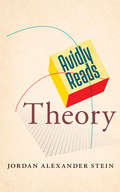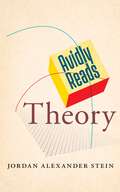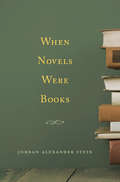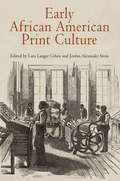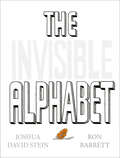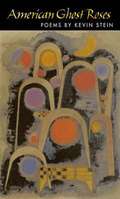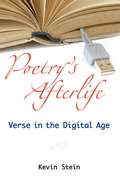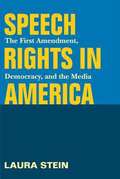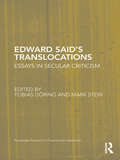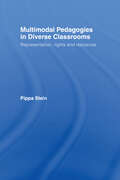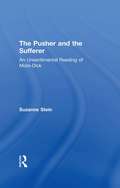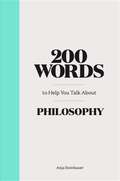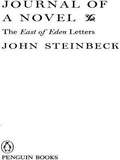- Table View
- List View
Music Is My Life: Louis Armstrong, Autobiography, and American Jazz
by Daniel SteinMusic Is My Lifeis the first comprehensive analysis of Louis Armstrong's autobiographical writings (including his books, essays, and letters) and their relation to his musical and visual performances. Combining approaches from autobiography theory, literary criticism, intermedia studies, cultural history, and musicology, Daniel Stein reconstructs Armstrong's performances of his life story across various media and for different audiences, complicating the monolithic and hagiographic views of the musician. The book will appeal to academic readers with an interest in African American studies, jazz studies, musicology, and popular culture, as well as general readers interested in Armstrong's life and music, jazz, and twentieth-century entertainment. While not a biography, it provides a key to understanding Armstrong's oeuvre as well as his complicated place in American history and twentieth-century media culture.
Nineteenth-Century Serial Narrative in Transnational Perspective, 1830s−1860s: Popular Culture—Serial Culture (Palgrave Studies in Nineteenth-Century Writing and Culture)
by Daniel Stein Lisanna WieleThis volume examines the emergence of modern popular culture between the 1830s and the 1860s, when popular storytelling meant serial storytelling and when new printing techniques and an expanding infrastructure brought serial entertainment to the masses. Analyzing fiction and non-fiction narratives from the United States, France, Great Britain, Germany, Austria, Turkey, and Brazil, Popular Culture—Serial Culture offers a transnational perspective on border-crossing serial genres from the roman feuilleton and the city mystery novel to abolitionist gift books and world’s fairs.
Language as Evidence: Doing Forensic Linguistics
by Dieter Stein Victoria Guillén-NietoThis edited book provides a comprehensive survey of the modern state of the art in forensic linguistics. Part I of the book focuses on the role of the linguist as an expert witness in common law and civil law jurisdictions, the relation of expert witnesses and lawyers, ethics standards, and courtroom interaction. Part II deals with some of the major areas of expertise of forensic linguistics as the scientific study of language as evidence, namely authorship identification, speaker identification, text authentication, deception and lie detection, plagiarism detection, and cyber language crimes. This book is intended to be used as a reference for academics, students and practitioners of Linguistics, Forensic Linguistics, Law, Criminology, and Forensic Psychology, among other disciplines.
Textual Mirrors: Reflexivity, Midrash, and the Rabbinic Self (Divinations: Rereading Late Ancient Religion)
by Dina SteinAs they were entering Egypt, Abram glimpsed Sarai's reflection in the Nile River. Though he had been married to her for years, this moment is positioned in a rabbinic narrative as a revelation. "Now I know you are a beautiful woman," he says; at that moment he also knows himself as a desiring subject, and knows too to become afraid for his own life due to the desiring gazes of others.There are few scenes in rabbinic literature that so explicitly stage a character's apprehension of his or her own or another's literal reflection. Still, Dina Stein argues, the association of knowledge and reflection operates as a central element in rabbinic texts. Midrash explicitly refers to other texts; biblical texts are both reconstructed and taken apart in exegesis, and midrashic narrators are situated liminally with respect to the tales they tell. This inherent structural quality underlies the propensity of rabbinic literature to reflect or refer to itself, and the "self" that is the object of reflection is not just the narrator of a tale but a larger rabbinic identity, a coherent if polyphonous entity that emerges from this body of texts.Textual Mirrors draws on literary theory, folklore studies, and semiotics to examine stories in which self-reflexivity operates particularly strongly to constitute rabbinic identity through the voices of Simon the Just and a handsome shepherd, the daughter of Asher, the Queen of Sheba, and an unnamed maidservant. In Stein's readings, these self-reflexive stories allow us to go through the looking glass: where the text comments upon itself, it both compromises the unity of its underlying principles—textual, religious, and ideological—and confirms it.
Spanish Workbook For Dummies
by Gail Stein¿Habla español? Improve your Spanish with Dummies Spanish Workbook For Dummies is full of clear explanations and hundreds of practice activities for beginning Spanish learners. You'll learn how to express yourself, ask questions, talk about the past, and construct simple sentences—en español. As you work through the book, complete practice exercises, get lots of writing opportunities, and have tons of fun. Then check your work, with answers and explanations at the end of every chapter. Plus, you'll have access to handy verb charts, a thematic vocabulary list, and mini-dictionaries, right inside this very book. Learn the fundamentals of Spanish with integrated grammar that advances as you go Work through practice exercises and activities as you read through each chapter Improve and activate your Spanish with explanations of each workbook answer Avoid common mistakes made by Spanish learners and get ready to travel, chat with friends, or interact with colleagues This friendly Dummies workbook is perfect for beginners of all ages. If you're looking to get started with Spanish, step right in—we've got the practice, practice, practice you need to succeed.
Everybody's Autobiography
by Gertrude SteinEverybodys Autobiography is among the very best of Gertrudes writing--[it] speaks with the true and original voice of Gertrude Stein, without apparent art or bravado. --Janet Hobhouse~In 1937, Gertrude Stein wrote a sequel to The Autobiography of Alice B. Toklas, but this darker and more complex work was long misunderstood and neglected. An account of her experiences as a result of writing a bestseller, Everybodys Autobiography is as funny and engaging as The Autobiography of Alice B. Toklas, but it is also a searing meditation on the meaning of success and identity in America. Posing as the representative American, Stein transforms her story into history--responding to the tradition of Thoreau and Henry Adams, she writes: "I used to be fond of saying that America, which was supposed to be a land of success, was a land of failure. Most of the great men in America had a long life of early failure and a long life of later failure. " Everybodys Autobiography is Stein at her most accessible and her most serious, and may yet prove to be among her most popular books.
The Geographical History of America: or the Relation of Human Nature to the Human Mind
by Gertrude Stein"First published in 1936 and long out of print, The Geographical History of America brings together prose pieces, dialogues, philosophical meditations, and playlets by one of the century's most influential experimental writers. This short but brilliant book offers a dimension of Gertrude Stein's thinking not available elsewhere. Here Stein sets forth her view of the human mind: what it is, how it works, and how it is different from - and more interesting than - human nature. " "Geographical History also elaborates on Stein's concepts of identity, landscape, presence, and composition. Today, as literary discourse pays more attention to textuality, to voice, reader-response, and phenomenology, Stein emerges as a pioneering modernist to whom the century is slowly catching up. For those in the performing arts, Geographical History further addresses the notion of play as landscape, one of Stein's most influential theatrical ideas, as well as such issues as dialogue, character, and dramatic structure - in a book that is itself a model of modern experimentation. "--BOOK JACKET. Title Summary field provided by Blackwell North America, Inc. All Rights Reserved
How to Write (Sun And Moon Classics Ser. #No. 83)
by Gertrude SteinFirst published in 1931, this book contains Gertrude Stein’s thoughts about the craft of writing. It is written in her usual experimental style, yet it is not difficult to understand, and even traditionalists will find that it has many things to say to them. <P><P> Her experimental style includes such elements as disconnectedness, a love of refrain and rhyme, a search for rhythm and balance, a dislike of punctuation (especially the comma), a dismissal of the conventional significance of words, and a repetition of words and phrases. Her approach to writing is impossible to summarize, but many critics see a strain of American humor in her work, borne out immediately by some of the chapter titles: “Saving the Sentence,” “Arthur a Grammar,” “Regular Regularly in Narrative,” and “Finally George a Vocabulary.” <P><P> Readers who have not encountered Gertrude Stein or who have had difficulty with her other work will find this book useful as an entry into her writing. It is also in itself a unique, exhilarating experience.
Narration: Four Lectures
by Gertrude SteinNewly famous in the wake of the publication of her groundbreaking Autobiography of Alice B. Toklas, Gertrude Stein delivered her Narration lectures to packed audiences at the University of Chicago in 1935. Stein had not been back to her home country since departing for France in 1903, and her remarks reflect on the changes in American culture after thirty years abroad.In Stein’s trademark experimental prose, Narration reveals the legendary writer’s thoughts about the energy and mobility of the American people, the effect of modernism on literary form, the nature of history and its recording, and the inventiveness of the English language—in particular, its American variant. Stein also discusses her ambivalence toward her own literary fame as well as the destabilizing effect that notoriety had on her daily life. Restored to print for a new generation of readers to discover, these vital lectures will delight students and scholars of modernism and twentieth-century literature.“Narration is a treasure waiting to be rediscovered and to be pirated by jolly marauders of sparkling texts.”—Catharine Stimpson, NYU
The Letters of Gertrude Stein and Carl Van Vechten, 1913-1946
by Gertrude Stein Carl Van VechtenThis monumental collection of correspondence between Gertrude Stein and critic, novelist, and photographer Carl Van Vechten provides crucial insight into Stein's life, art, and artistic milieu as well as Van Vechten's support of major cultural projects, such as the Harlem Renaissance. From their first meeting in 1913, Stein and Van Vechten formed a unique and powerful relationship, and Van Vechten worked vigorously to publish and promote Stein's work. Existing biographies of Stein—including her own autobiographical writings—omit a great deal about her experiences and thought. They lack the ordinary detail of what Stein called "daily everyday living": the immediate concerns, objects, people, and places that were the grist for her writing. These letters not only vividly represent those details but also showcase Stein and Van Vechten's private selves as writers. Edward Burns's extensive annotations include detailed cross-referencing of source materials.
Industrial Craft in Australia: Oral Histories of Creativity and Survival (Palgrave Studies in Oral History)
by Jesse Adams SteinThis book is the first of its kind to investigate the ongoing significance of industrial craft in deindustrialising places such as Australia. Providing an alternative to the nostalgic trope of the redundant factory ‘craftsman’, this book introduces the intriguing and little-known trade of engineering patternmaking, where objects are brought to life through the handmade ‘originals’ required for mass production.Drawing on oral histories collected by the author, this book highlights the experiences of industrial craftspeople in Australian manufacturing, as they navigate precarious employment, retraining, gendered career pathways, creative expression and technological change. The book argues that digital fabrication technologies may modify or transform industrial craft, but should not obliterate it. Industrial craft is about more than the rudimentary production of everyday objects: it is about human creativity, material knowledge and meaningful work, and it will be key to human survival in the troubled times ahead.
Avidly Reads Theory
by Jordan Alexander SteinAvidly Reads is a series of short books about how culture makes us feel. Founded in 2012 by Sarah Blackwood and Sarah Mesle, Avidly—an online magazine supported by the Los Angeles Review of Books—specializes in short-form critical essays devoted to thinking and feeling. Avidly Reads is an exciting new series featuring books that are part memoir, part cultural criticism, each bringing to life the author’s emotional relationship to a cultural artifact or experience. Avidly Reads invites us to explore the surprising pleasures and obstacles of everyday life. This is a story about the emotional lives of ideas. As an avowed “theory head,” Jordan Alexander Stein confronts a contradiction: that the abstract, and often frustrating rigors of theory also produced a sense of pride and identity for him and his friends: an idea of how to be and a way to live. Although Stein explains what theory is, this is not an introduction or a how-to. Organized around five ways that theory makes us feel—silly, stupid, sexy, seething and stuck—Stein travels back to the late nineties to tell a story of coming of age at a particular moment and to measure how that moment lives on now.
Avidly Reads Theory
by Jordan Alexander SteinAvidly Reads is a series of short books about how culture makes us feel. Founded in 2012 by Sarah Blackwood and Sarah Mesle, Avidly—an online magazine supported by the Los Angeles Review of Books—specializes in short-form critical essays devoted to thinking and feeling. Avidly Reads is an exciting new series featuring books that are part memoir, part cultural criticism, each bringing to life the author’s emotional relationship to a cultural artifact or experience. Avidly Reads invites us to explore the surprising pleasures and obstacles of everyday life. This is a story about the emotional lives of ideas. As an avowed “theory head,” Jordan Alexander Stein confronts a contradiction: that the abstract, and often frustrating rigors of theory also produced a sense of pride and identity for him and his friends: an idea of how to be and a way to live. Although Stein explains what theory is, this is not an introduction or a how-to. Organized around five ways that theory makes us feel—silly, stupid, sexy, seething and stuck—Stein travels back to the late nineties to tell a story of coming of age at a particular moment and to measure how that moment lives on now.
When Novels Were Books
by Jordan Alexander SteinThe novel was born religious, alongside Protestant texts produced in the same format by the same publishers. Novels borrowed features of these texts but over the years distinguished themselves, becoming the genre we know today. Jordan Alexander Stein traces this history, showing how the physical object of the book shaped the stories it contained.
Early African American Print Culture
by Jordan Alexander Stein Lara Langer CohenThe eighteenth and nineteenth centuries saw both the consolidation of American print culture and the establishment of an African American literary tradition, yet the two are too rarely considered in tandem. In this landmark volume, a stellar group of established and emerging scholars ranges over periods, locations, and media to explore African Americans' diverse contributions to early American print culture, both on the page and off.The book's seventeen chapters consider domestic novels and gallows narratives, Francophone poetry and engravings of Liberia, transatlantic lyrics and San Francisco newspapers. Together, they consider how close attention to the archive can expand the study of African American literature well beyond matters of authorship to include issues of editing, illustration, circulation, and reading--and how this expansion can enrich and transform the study of print culture more generally.Published in cooperation with the Library Company of Philadelphia.
The Invisible Alphabet
by Joshua David SteinAn ABC of things unseen: from Air to Zero, and Nothing in between.A is for AirB is for Bare C is for ClearThere is nothing to see in this A to Z, other than clues to what was once or may soon be there. The 26 alphabetical scenarios are conceptual, mysterious, and meticulous, deliberately hinting at a story that has happened off the page. Readers are encouraged to explore each letter and soak in the wonder and curiosity of the alphabet unseen. Cleverly illustrated by the beloved Ron Barrett of Cloudy with a Chance of Meatballs, this hardcover picture book is less about the letters you see, and more about the story you don't.
American Ghost Roses
by Kevin SteinIn his first book as the poet laureate of Illinois, Kevin Stein shoulders an array of poetic forms, blending pathos, humor, and social commentary. These poems--ranging from meditative narratives to improvisational lyrics--explore art's capacity to embody as well as express contemporary culture. Stein embraces subjects as various as his father's death, magazine sex surveys, Kandinsky's theory of art, the dangling modifier, Jimi Hendrix's flaming guitar, racial bigotry, and a teacher's comments on a botched poem. Presiding over this miscellany are ghosts of a peculiarly American garden of dreamers and beloved misfits, those redeemed and those left fingering the locked gate
Poetry's Afterlife: Verse in the Digital Age
by Kevin SteinAt a time when most commentators fixate on American poetry's supposed "death," Kevin Stein's Poetry's Afterlife instead proposes the vitality of its aesthetic hereafter. The essays of Poetry's Afterlife blend memoir, scholarship, and personal essay to survey the current poetry scene, trace how we arrived here, and suggest where poetry is headed in our increasingly digital culture. The result is a book both fetchingly insightful and accessible. Poetry's spirited afterlife has come despite, or perhaps because of, two decades of commentary diagnosing American poetry as moribund if not already deceased. With his 2003 appointment as Illinois Poet Laureate and his forays into public libraries and schools, Stein has discovered that poetry has not given up its literary ghost. For a fated art supposedly pushing up aesthetic daisies, poetry these days is up and about in the streets, schools, and universities, and online in new and compelling digital forms. It flourishes among the people in a lively if curious underground existence largely overlooked by national media. It's this second life, or better, Poetry's Afterlife, that his book examines and celebrates. Kevin Stein is Caterpillar Professor of English and Director of the Creative Writing Program at Bradley University and has served as Illinois Poet Laureate since 2003, having assumed the position formerly held by Gwendolyn Brooks and Carl Sandburg. He is the author of numerous books of poetry and criticism.
Speech Rights in America: The First Amendment, Democracy, and the Media
by Laura SteinThe First Amendment is the principle guarantor of speech rights in the United States, but the Supreme Court's interpretations of it often privilege the interests of media owners over those of the broader citizenry. In Speech Rights in America, Laura Stein argues that such rulings alienate citizens from their rights, corrupt the essential workings of democracy, and prevent the First Amendment from performing its critical role as a protector of free speech. Drawing on the best of the liberal democratic tradition, Stein demonstrates that there is a significant gap between First Amendment law and the speech rights necessary to democratic communication, and proposes an alternative set of principles to guide future judicial, legislative, and cultural policy on old and new media.
Edward Said's Translocations: Essays in Secular Criticism (Routledge Research in Postcolonial Literatures)
by Mark Stein Tobias DöringWorking with processes of translocation enabled Edward Said to point out interdependence and complementarity across geographical borders and disciplinary boundaries while recognizing cultural difference and the distinct historical experiences of colonizer and colonized. This book brings into focus Said’s politics of reading, from his literary criticism in English to his political columns in Arabic. The international contributors—from Britain, Egypt, France, Germany, India, Switzerland, and the United States—investigate his intellectual legacies without necessarily identifying themselves with the critical positions these involve. Instead of treating his work as a unitary theoretical system, the various arguments explored offer a critical assessment of those situations in which his writing has entered into a productive relationship with other theoretical positions and interlocutors. The collection considers location, which has always been a central category in and for Said’s writing; readings, which designates the acts by which, according to Said, the world comes to be constituted; and legacies, which pertains to the many fields across the boundaries of established academic disciplines that have taken up Said’s challenges. The critical positions visited in this book include critical and cultural theory, postcolonialism, literary studies, theatre and performance studies, and visual and music studies.
Multimodal Pedagogies in Diverse Classrooms: Representation, Rights and Resources
by Pippa SteinMultimodal Pedagogies in Diverse Classrooms examines how the classroom can become a democratic space founded on the integration of different histories, modes of representation, feelings, languages and discourses, and is essential reading for anyone interested in the connection between multimodality, pedagogy, democracy and social justice in diverse classrooms. Pippa Stein combines theory with material taken from post-apartheid classrooms in South Africa where students from different language and cultural backgrounds negotiate the ongoing tensions between tradition and modernity, Western and African intellectual thought, as well as the apartheid-past of their parents, and their own aspirations for the future. This insightful book argues that classrooms can become ‘transformative’ sites in which students can develop curricula and pedagogies which speak to the diversity of global societies, and looks at: How multimodality can be used to promote social justice and democracy in diverse classrooms; The forms of representation through which students make meaning in classrooms; How those forms contribute to the building of democratic cultures; The cultural resources available to students, and how they are used for learning; Difference as a productive energy for learning. Dealing with issues such as democracy, politics of difference, diversity, multicultural and multilingual classrooms, this book is as pertinent to readers across the globe as it is to those in South Africa, and will be invaluable and fascinating reading for anyone working or interested in this field.
The Pusher and the Sufferer: An Unsentimental Reading of "Moby Dick" (Studies in Major Literary Authors #2)
by Suzanne SteinFirst Published in 2000. Routledge is an imprint of Taylor & Francis, an informa company.
200 Words to Help You Talk about Philosophy
by Anja SteinbauerHave you have ever felt at a disadvantage when joining in a conversation on a subject that you aren't confident about? If yes, this new book series is for you. Each book features definitions of two hundred words frequently used to describe and discuss a smart subject.200 Words to Help You Talk About Philosophy is designed to demystify jargon-based philosophic language and make you at ease holding a conversation on the topic. Philosophy can be baffling, as well as fascinating, to the best of us. Let Anja Steinbauer guide you through doubt, dialectic, Dao, and much more. The book is written with digestible text enabling a quick and easy understanding of various topics while broadening your philosophical vocabulary. 200 Words to Help You Talk About Philosophy is one of two new titles beginning a series of smart subjects, also including art, psychology, and music.
200 Words to Help You Talk about Philosophy
by Anja SteinbauerHave you have ever felt at a disadvantage when joining in a conversation on a subject that you aren't confident about? If yes, this new book series is for you. Each book features definitions of two hundred words frequently used to describe and discuss a smart subject.200 Words to Help You Talk About Philosophy is designed to demystify jargon-based philosophic language and make you at ease holding a conversation on the topic. Philosophy can be baffling, as well as fascinating, to the best of us. Let Anja Steinbauer guide you through doubt, dialectic, Dao, and much more. The book is written with digestible text enabling a quick and easy understanding of various topics while broadening your philosophical vocabulary. 200 Words to Help You Talk About Philosophy is one of two new titles beginning a series of smart subjects, also including art, psychology, and music.
Journal of a Novel: The East of Eden Letters
by John SteinbeckEach working day from January 29 to November 1, 1951, John Steinbeck warmed up to the work of writing East of Eden with a letter to the late Pascal Covici, his friend and editor at The Viking Press. It was his way, he said, of "getting my mental arm in shape to pitch a good game. " Steinbeck's letters were written on the left-hand pages of a notebook in which the facing pages would be filled with the test of East of Eden. They touched on many subjects--story arguments, trial flights of worknamship, concern for his sons. Part autobiography, part writer's workshop, these letters offer an illuminating perspective on Steinbeck's creative process, and a fascinating glimpse of Steinbeck, the private man. .
